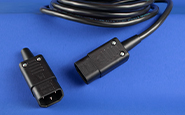Crimp Cross Section and Pull Test
Crimp Cross Section Station
In order to maintain Interpower’s high standards for quality wire crimps that are demanded by our customers, we conduct a test at our Crimp Cross Station which enables us to visually inspect the crimp for proper crimp geometry and conductor wire compression, insuring a good connection. Samples are prepared by cutting, grinding and polishing crimp cross sections to visually inspect the crimp. Optimal crimp quality results in uniform strand compression, similar to a honey comb appearance.
What is actually happening when this test is being done?
Crimps are evaluated in four basic areas. Crimp height, crimp width, conductor wire compaction within the terminal crimp and conductor wire pull out force. We utilize our micrographic lab equipment which can be seen demonstratedin the below video.
Is this test also conducted by the testing agencies?
No. However, there are guidelines supplied by the terminal manufacturers.
Are there any requirements of the testing agencies for crimp cross section testing?
Not for the crimp cross section visual inspection. There are conductor wire pull out guidelines which are published by Underwriters Laboratories and International Electrotechnical Commission (IEC). It is critical to meet the four requirements mentioned above in order to comply with the testing agencies’ wire terminal pull out requirements.
What do we test ours to?
We comply with the terminal manufactures specifications, UL 486A-486B section 9.3.4.1 and IEC 60352-2 clause 5.2.2.1If you have any questions please let us know by emailing infopower@interpower.com.
Crimp Pull Test
A quality crimp results in a strong resistance to pull off forces. Samples are positioned in fixtures that anchor the crimped terminal and pull out the stranded conductors, while monitoring pull forces, usually in Newtons. Results are compared to values required to break stranded conductors, and to past test results to verify consistency.
Video Transcription:
Crimps are measured using our crimp quality equipment. We start by measuring crimp height and width. Then we evaluate crimp quality using the micrograph lab station. Following the crimp evaluation samples are then pull tested for crimp retention.






